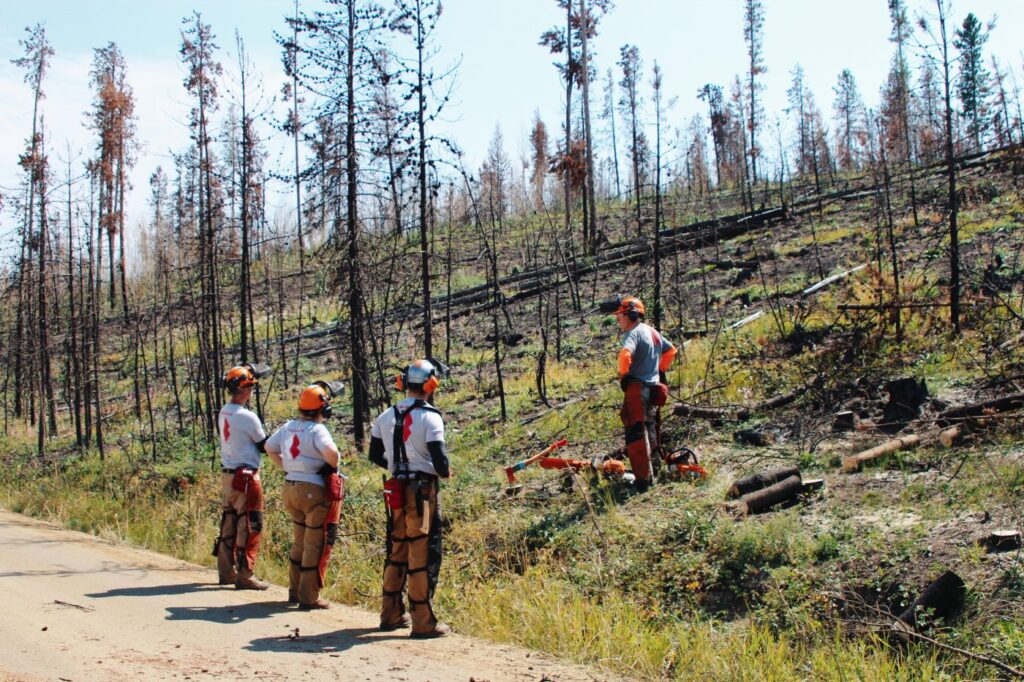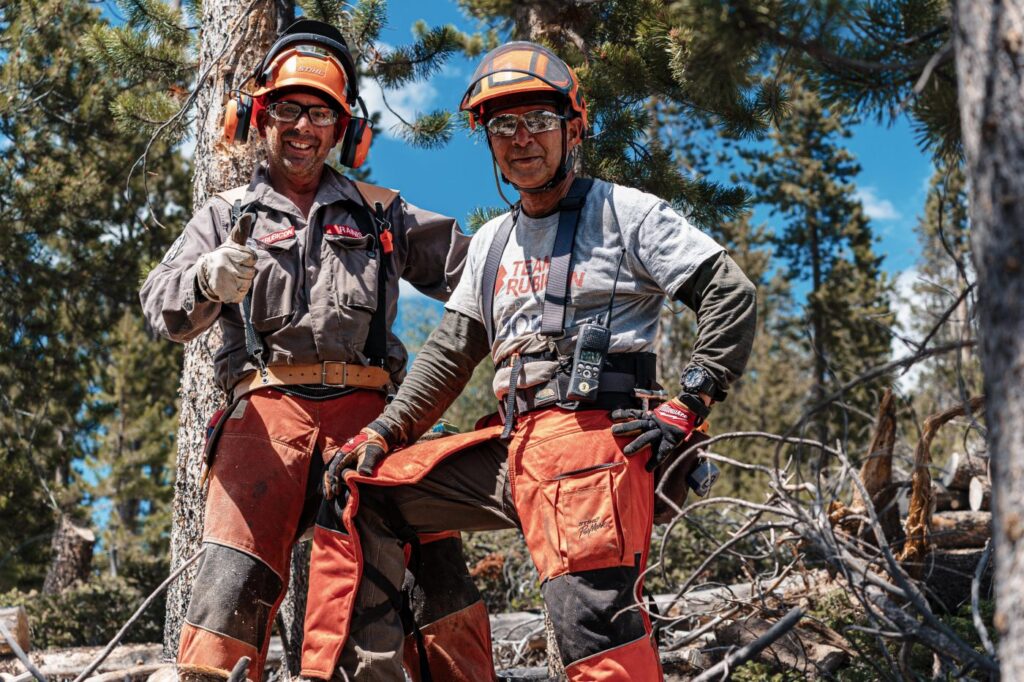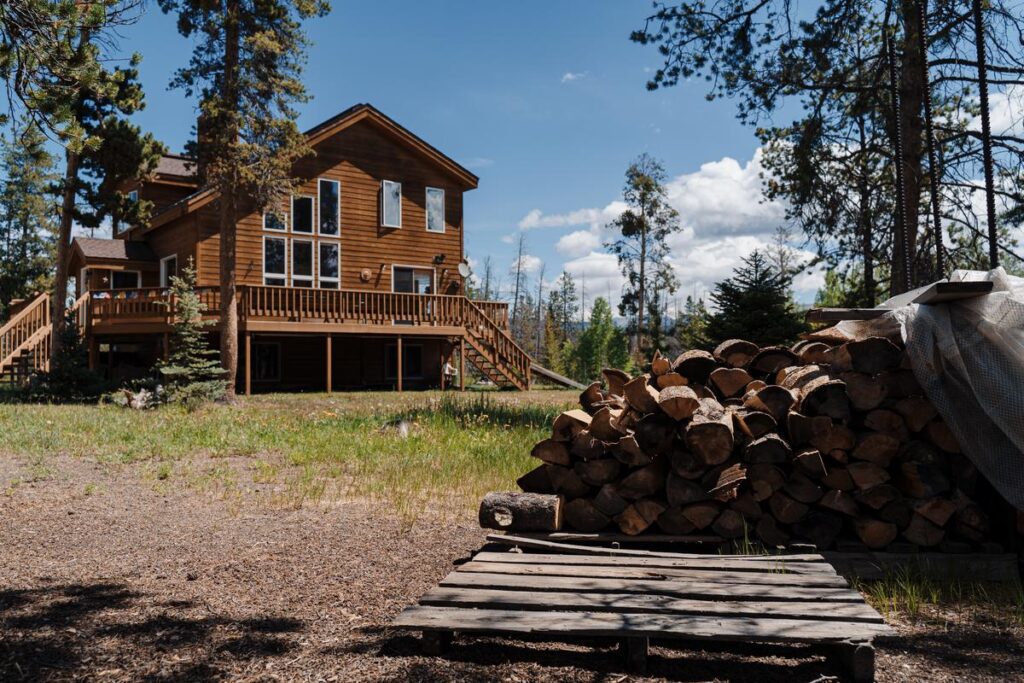High in the Colorado Rockies, Grand County sprawls across nearly 1,900 miles of meadows, valleys, and mountain peaks. Remote and increasingly arid—the county is in a historic 30-year drought—it is one of several small communities that, with increasing frequency, have been in the path of wildfires.
In October of 2020, the second-most devastating wildfire in Colorado history started east of Troublesome Creek in Grand County. High winds fanned the blaze into an inferno that lasted more than a month, destroyed more than 190,000 acres, burned over 500 homes and other structures, and killed two people.

At the time of the fire, a Community Wildfire Protection Plan was already in the works, according to Battalion Chief for the Headwaters Fire Management Region Tyler Campbell, but few in the community had been actively implementing mitigation practices. It would take an emergency such as the East Troublesome Fire to spur people into action. “They just don’t seem to want to do the mitigation until it’s a little bit too late,” says Campbell.
After the East Troublesome blaze attitudes changed. Fire protection was on everyone’s mind, and homeowners became eager to learn how at risk their properties were. “In the spring [of 2021] everyone wanted to do assessments on their house,” said East Grand Assistant Fire Marshal Ryan Mowrey. Emergency personnel like Mowrey spent a lot of the summer of 2021 speaking with homeowners, adding to the Community Wildfire Protection Plan, and scouring for the resources and funding needed to assess risks and provide fire mitigation services to the communities.
That fall, Team Rubicon volunteers, or Greyshirts as they are known, rolled into Grand County for what would become the first of two operations.
One Wildfire Operation Begets Another
In September of 2021, nearly 100 Greyshirts spent two days removing hazard trees from along rights-of-way and assisting with burnt- and dead-tree removal throughout the community. They sawed and swamped and hauled away hazardous debris and obstacles that had been created by the East Troublesome Fire. Greyshirts also worked on a secondary mitigation purpose and removed potential flashflood debris from the roads and entry points to the community.
A few months after the completion of that operation, Team Rubicon and the American Red Cross announced a joint venture to serve the at-risk area: a $200,000 grant from the Red Cross would fund Greyshirt fire mitigation services in Grand County.

So, in the summer of 2022, Team Rubicon launched its largest wildfire mitigation operation to date and Greyshirt volunteers from across the U.S. and Canada ascended 9,000 feet into the Colorado mountains to help three Grand County communities with Very High Fire Danger Ratings protect themselves. Over the course of six weeks some 175 Greyshirts worked with local homeowners to calculate, and then alleviate, the risk to their homes and properties.
The risks begin with the houses themselves, and the first five feet surrounding them, known as the Home Ignition Zone (HIZ). Clearing flammable vegetation and debris from the HIZ to create a safety barrier empty of potential fuel sources is essential. After identifying stumps, trees, brush, tall grass, leaves, firewood piles, bark mulch, and other flammable materials in a HIZ, Greyshirts would remove the debris. Then, they moved beyond the HIZ and, from five to 30-feet from the home, stripped tree limbs up to 12 feet from the ground, took down dead trees, and removed stumps and downed branches, all to lessen fuel available for future fires.
Freeing Up First Responders to Do More Direct Attacks on Fire
This basic work of clearing vegetation and debris is some of the most necessary for fire mitigation and also the most cost-effective. The benefit isn’t exclusively in property saved for residents, either. Such fire mitigation efforts can protect the bottom line of the community. According to the Federal Emergency Management Agency, spending $1 on fire prevention and fire mitigation services can save $6 on fighting fires or repairing damage caused by fire. The cost savings of fire mitigation like this scale in direct proportion with property values, in some areas of the country every dollar spent on fire mitigation can save as much as $40 in firefighting and rebuilding.
From the end of May through the first week of July, Greyshirts collected some 267,000 cubic feet of wildfire fuel and debris from 56 acres of HIZ around 108 homes. Dead and dying trees were also removed from 65 acres, severely reducing the chances of extreme fire behavior between houses. And, all that fire mitigation work was provided at no cost to the Colorado homeowners.

The volunteers’ efforts made a tangible impact.
“Every hour Team Rubicon worked here is an hour that we as firefighters now don’t have to put into the community for the structure protection things,” said Battalion Chief Campbell. “And it’s hours that the homeowners now don’t have to put into their properties as well. So, it’s huge. It frees us up to do more direct attacks on the fire.”
Plus, the HIZ information gathered by the Greyshirts during their assessments is allowing the county to update and redo their Community Wildfire Protection Plan, benefiting the entire community.
Providing Fire Mitigation Services for Others Opens Eyes at Home
One of the big wins for the operation’s commander, Duane Poslusny, was the HIZ risk assessments they performed, a new pilot program for Team Rubicon. Embers and smoldering debris can be very small and be carried by the wind into homes. During HIZ risk assessments, Greyshirts searched for chimneys and vents, potential fire entry points into a home, and assessed the materials of the home itself, advising the homeowners on how to further protect themselves with new roofing or siding and educating them on the risks—education that the Greyshirts also highly valued.
“I heard lots of comments during the training,” said Poslusny, “about how much work Greyshirts had to do on their own homes, and how they look at homes and neighborhoods with new eyes focused on fire hazards.”
Educating homeowners about wildfire protection was the most impactful part of the operation, said Poslusny. “By providing wildfire home assessments to individual residents, those residents are now empowered to continue protecting their homes long into the future.”
“Oh, my God, we can actually stay here now. It’s a defendable structure now.”
During the operation, 88 Greyshirts were trained in HIZ assessments. They went on to conduct wildfire assessments at 117 homes. “We were so fortunate to have Team Rubicon come in,” said Mowrey, “They’re doing mitigation work in addition to hundreds of assessments.”
The fire marshal himself was one such homeowner. With scant resources previously at his disposal, Mowrey had never had the ability to assess his own property—let alone time to perform the mitigation. Greyshirts solved those issues for him and his family: they cut through potential wildfire fuel sources from the HIZ around his house, they trimmed or uprooted bushes, felled trees, delimbed other trees, and bucked, stacked, or chipped the branches, logs, and stumps. The end result was a more fire safe home that one of the community’s top public servants could be proud of.
“The first thing I thought when they finished was ‘Oh, my God, we can actually stay here now. It’s a defendable structure now’,” said Mowrey.




